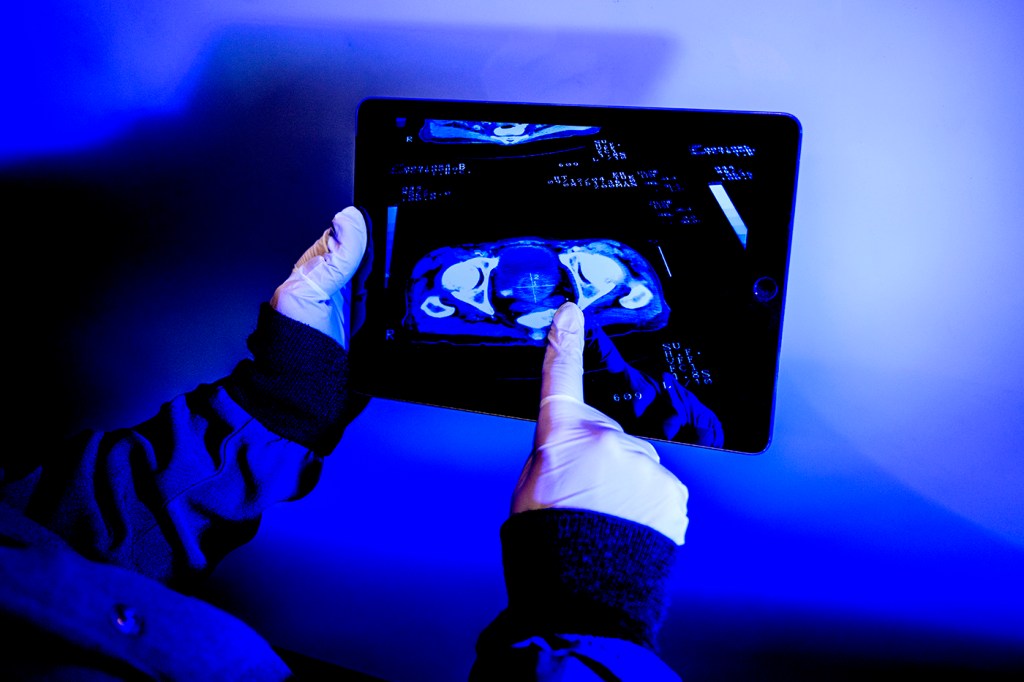New AI tool can help health care
providers detect prostate cancer faster,
Northeastern researcher says

A new web-based tool utilizing AI can help pathologists detect prostate cancer faster, say Northeastern University researchers who developed the technology.
Prostate cancer is the most common non-skin cancer among men in the United States and is the second-leading cause of cancer death among men in the country. But if it’s caught early enough, the disease is much more easily treatable, and in many cases patients can be cured.
Since the 1990s, prostate cancer deaths in the U.S. have declined by 40% to 50% thanks to early detection and therapy improvements, according to Fred Hutch Cancer Center.

Yet increasingly, men under the age of 50 are getting diagnosed with prostate cancer. At the same time, there continues to be a shortage of pathologists in the U.S., and many people aren’t being screened until it’s too late.
Researchers at Northeastern’s Roux Institute in Portland, Maine, say the new tool can help expedite the diagnosis.
Current methods involve doctors reviewing biopsy slides manually looking for abnormality in the organ. That process can take an hour. The new tool takes just seconds, researchers say.
“This work will provide a more accurate and timelier diagnosis and grading than the manual existing process in prostate cancer diagnosis,” says Saeed Amal, a bioengineering professor at Northeastern who led the development of the tool. “This will reduce the time for diagnosis, grading and treatment, and will result in greatly improved patient care and help alleviate the issues caused by the nationwide shortage of pathologists.”
A small group of pathologists recently tested the new tool as part of a pilot research survey conducted by Amal.
This work will provide a more accurate and timelier diagnosis and grading than the manual existing process in prostate cancer diagnosis.
Saeed Amal, a bioengineering professor at Northeastern
With the feedback, the team will work to improve the nascent technology in its mission to one day offer the tool for broader use.
The web tool can be accessed using any internet browser. Its interface was designed to be quick and easy to use, allowing pathologists to upload biopsy scans in just a few clicks, Amal explains. (The tool isn’t FDA-approved yet, and the web tool is currently being hosted on the university’s servers.)
Featured Posts
Once the scans are uploaded, the tool takes advantage of deep learning algorithms and analyzes the scan and predicts a numeral grade of the prostate using the International Society of Urologic Pathologists (ISUP) grading model. The ISUP model helps pathologists understand the health of the prostate and the severity of a patient’s cancer if they have it.
That the system can be accessed via a web browser was no accident, Amal explains. Many doctor’s offices throughout the world have computers and internet access. The goal of the tool is to more easily integrate AI into the clinical process.
“The most novel aspect of this work lies in its pioneering approach to integrating artificial intelligence with multiple modalities for prostate cancer diagnosis in the form of an application that can be used in real-clinics,” he wrote in a summary of the report.
Once the tool produces information on the scan, the web tool offers information to help determine the next steps, Amal says.
The goal of this particular study was to understand the usability and accessibility of the system. Five pathologists participated in the study and were asked to give their thoughts on the software, Amal says.
“Regarding ease of understanding, 60% of users were comfortable navigating the application, Amal wrote in a summary of the report,“with an average rating of 5.5 out of 7 for information presented and intuitiveness.”
In future studies, the team hopes to increase the number of participants to more than 20, Amal says.
“The insights gained from this study lay the foundation for future iterations and improvements, aiming to enhance both the user experience and the clinical impact of the web application,” he says.










